Entering pit row in Brest Atlantiques
Published on November 12th, 2019
(November 12, 2019; Day 8) – The four doublehanded maxi trimarans of the Ultim Class, which permits a maximum length of 32 meters and a maximum width of 23 meters, are approaching the first of two marks in the 14,000nm Brest Atlantiques, but damage for half the fleet will see the rankings disrupted as they seek pitstops in Brazil ports for repair.
The Maxi Edmond de Rothschild (Franck Cammas/ Charles Caudrelier) was first to stop, arriving this morning (9:18am) at Salvador de Bahia where their technical team has been working to repair its daggerboard. MACIF (François Gabart/ Gwénolé Gahinet) has now taken the lead but tomorrow will stop in Rio de Janeiro to replace its central hull rudder (on loan from Banque Populaire).
Sodebo Ultim 3, with the duo of Thomas Coville and Jean-Luc Nélias, should then be able to take the lead ahead of Yves Le Blévec and Alex Pella on Actual Leader.
Offshore champion Sébastien Josse offers this review of the previous week of racing.
At the start of the race, and following the descent into the Bay of Biscay, how did it go for the four trimarans?
As expected, they all sailed safely, leaving with one or two reefs in the main and no headsail; they didn’t have much choice. They knew that there were six tricky hours to come – and in tough conditions to boot. The difference with the Route du Rhum last year is that it was more open, so less demanding for the boats.
However, the four boats still set off at a fast pace, at an average speed of 28 knots. They remained bunched initially, but after four or five hours, MACIF unfurled its headsail and immediately gained 4-5 knots of boat speed. The Maxi Edmond de Rothschild was fast to follow, being the competitors they all are.
Then there were different routes to choose, why do you think that was?
Yes, Maxi Edmond de Rothschild and Actual Leader chose to sail inside the TSS (traffic separation scheme), which wasn’t necessarily the best choice. The route taken by MACIF – to the west – was actually more favorable. I think that choosing this inside course was partly due to the sea’s state; it was a slightly safer choice.
After that, there was a gybing battle….
Yes, and in winds that were actually a lot more erratic than what was forecast. The Maxi Edmond de Rothschild gybed first, and then made two further gybes. I think they tried to escape from a squall which they got caught up in. Here again, they were heading in a more westerly direction, but the Maxi Edmond de Rothschild crossed in front, as the fastest boat in the fleet.
They’re always able to keep a little extra in the tank: always a little faster, and a little lower. We saw this happen on the Route du Rhum and in training this year. Which is to be expected, because even though MACIF has had a refit to be more efficient, Gitana 17 is a newer and bigger boat. The MACIF trimaran is 2 metres shorter (30 metres compared to 32).
What about crossing the Doldrums?
I think they all took into account what happened on the Transat Jacques Vabre. Maxi Edmond de Rothschild did well. I think that when going at slower speeds, the damage to MACIF’s rudder has been a disadvantage, as it will have become more difficult to manoeuvre the boat. They may even have lost control at times and perhaps made some 360° turns. At high speeds, however, above 25 knots, it’s actually an advantage to not have a central rudder, because it means there’s less drag.
Do you think that Maxi Edmond de Rothschild suffered as a result of the damage to their daggerboard?
Yes, I think that between the Doldrums and Bahia, they should have been going at an average speed of 35 knots or even higher. In reality, they rarely went above 30 knots.
Will these two technical stopovers create enough distance to favour Sodebo Ultim 3 and Actual?
It obviously depends on how long the stopovers take; but yes, of course. As these boats are sailing at over 25 knots at any given time, which means that a pitstop allows those behind to catch up quickly. So, Sodebo will be able to take the lead if they don’t end up having to make any stops. We know that this race will be full of surprises, and these pit stops are just a part of it.
How do you rate the track record of Sodebo Ultim 3 and Actual Leader so far?
We have always known that Actual Leader is a slower boat than the others, and this came to play a part at the start of the race, where she sailed further downwind compared to the others. Looking ahead to the rest of the course in the South Atlantic, it’s going to be a different story. If they make no stops – and everyone else does – they could win.
As for Sodebo Ultim 3, we can see that it’s going a little slower than the Maxi Edmond de Rothschild and Trimaran MACIF at certain speeds. I remember hearing Thomas say two years ago that he’d designed this boat for the solo round-the-world attempt originally planned for the end of this year, and because of that, he preferred to have above all a reliable boat. For the time being, it’s proved to be a good decision, since he looks like he’s going to take the lead.
Looking forward, what’s the route to Cape Town in the South Atlantic looking like?
Complicated! For the moment, this route will see the boats having to contend with the St. Helena High. The best option will be to pass to the north of the high with upwind conditions for a while. For now, it looks like there’s going to be some upwind sailing between Rio and Cape Town.
And upwind sailing is not very pleasant…
Not necessarily. Today, when these boats are in flight mode, you can sail upwind at 28-30 knots offshore. They’re fitted with shock absorbers, so in terms of comfort, it’s actually not that unpleasant; the boats sail pretty flat. It will be less comfortable for Actual Leader, who doesn’t fly like the others. Otherwise, the disadvantage of upwind sailing is that it puts a little more strain on the boats.
Event details – Race brochure – Tracker – YouTube
The race sends these doublehanded speedsters on a course from Brest that will turn at Rio de Janeiro (Brazil) and Cape Town (South Africa) before returning to Brest. The Ultim Class is for trimarans with a maximum length of 32 meters and a maximum width of 23 meters.
The turning marks will see the boats leave to port the chain of Cagarras Islands, in front of the famous Ipanema beach in the Bay of Rio and Robben Island off the coast of Cape Town, where Nelson Mandela was imprisoned for 18 years.
It is an unprecedented course, lined with several weather traps, especially along The Cape, a route almost never taken in offshore racing.
Each entry will be skippered by four fantastic pairs and accompanied by a media man who is not allowed to take an active role in the performance of the boat. The teams are:
• Actual leader: Yves Le Blévec/Alex Pella
• Maxi Edmond de Rothschild: Franck Cammas/Charles Caudrelier
• Trimaran Macif: François Gabart/Gwénolé Gahinet
• Sodebo Ultim 3: Thomas Coville/Jean-Luc Nélias
Source: BREST ULTIM SAILING


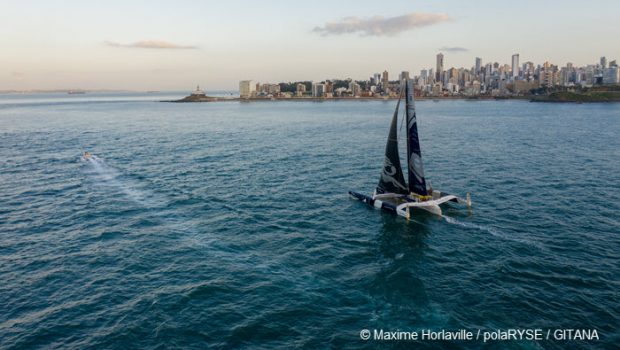




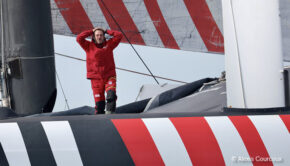
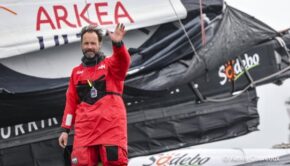
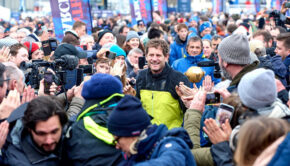
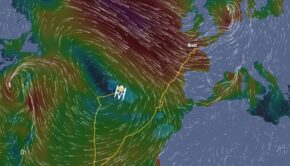
 We’ll keep your information safe.
We’ll keep your information safe.